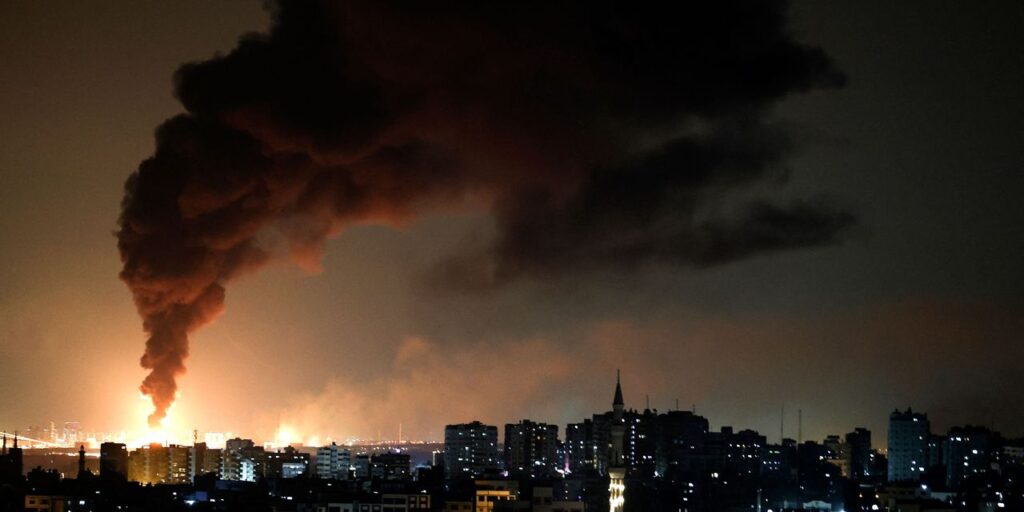There are four reasons why oil prices are not trading that much higher than they did before the Hamas attack on Israel nearly three weeks ago, according to Capital Economics.
In the past, “rising geopolitical tension in the Middle East — even if it doesn’t affect supply — has been enough to prompt a surge in oil prices,” wrote Caroline Bain, chief commodities economist at Capital Economics, in a note Thursday. “But so far, investors have not rushed to price in the new risks.”
The “cautious oil market reaction to the outbreak of conflict in Israel probably reflects the huge uncertainty about the eventual outcome, but also a somewhat lower Middle East risk premium,” she said.
As of Thursday, U.S. benchmark December West Texas Intermediate crude
CLZ23,
CL.1,
traded at $83.88 a barrel on the New York Mercantile Exchange. That’s about 1.3% higher than the Oct. 6 settlement of $82.79, the day before the Oct. 7 Hamas attack which started a war between Israel and Gaza.
Global benchmark December Brent crude
BRN00,
BRNZ23
traded at $88.49 on Thursday — 4.6% higher than the Oct. 6 settlement.
Given that the oil market is currently in a supply deficit, the risk of additional supply disruption should have had an “outsized impact on prices,” said Bain. Israel does not produce oil in any quantity so there is little direct impact on supply, but there is the “very real risk…that the conflict escalates and regional players, who are also large oil producers, get involved.”
That includes Iran, which accounts for 24% of oil reserves in the Middle East and 12% in the world, at the end of 2021, according to the U.S. Energy Information Administration. Iran has been known to aid the militant group Hamas.
Read Israel-Gaza war scenarios: Here’s what might lift oil prices to $95, $100 and $115 a barrel
Still, oil producers in the Gulf are now “much more integrated into global financial markets” than in the past and would not want to risk sanctions, said Bain.
Capital Economics, however, has “argued for some time that the Middle East-related risk premium in the oil price is in decline, probably since the 1970s,” she said.
Here are the four reasons why that risk premium has fallen:
First of all, “the Middle East’s share of global oil production has dropped from 40% in 1970 to around 30% in 2022,” Bain said. Efforts have also been made within the region to ease potential choke points, Bain said, pointing out that Saudi Arabia developed export routes on its west coast so it can bypass the Strait of Hormuz if that oil chokepoint were to be blocked.
Second, there’s “an alternative and more flexible source of supply in the form of U.S. shale oil,” said Bain.
Third, most countries now have “sizeable strategic reserves to drawdown in the event of supply disruption,” she said. The Biden administration ordered the largest-ever release of oil from the U.S. Strategic Petroleum Reserve last year, in the wake of the Russia-Ukraine war.
Read: U.S. is set to play tug of war with OPEC+ for oil market share as Middle East hostilities warrant output boost
As for reason number four, growth in global oil demand is now “significantly lower than in the past, and may even turn negative soon as the electrification of transport gathers pace,” said Bain.
In a monthly report released Tuesday, the International Energy Agency said global demand for fossil fuels is likely to peak before 2030.
All that said, Bain emphasized that the market would “almost certainly” see a spike in oil prices if Iran, or another large oil producer in the region were to become actively involved in the Israel-Hamas conflict.
For now, “it appears that investors do not think this is a major risk,” she said. “The huge uncertainty about the outcome of the conflict means that we can only discuss the risks, with a view to revising our [oil-price] forecasts as and when the fundamentals change.”
Read the full article here

